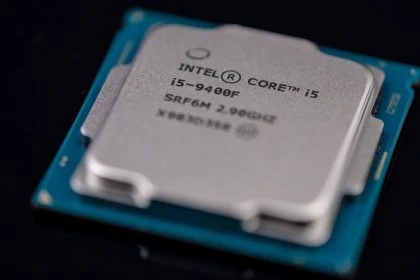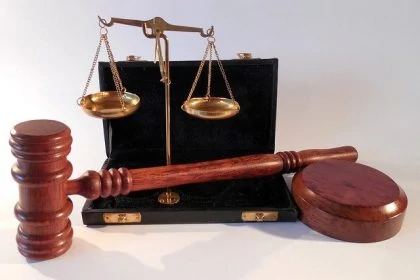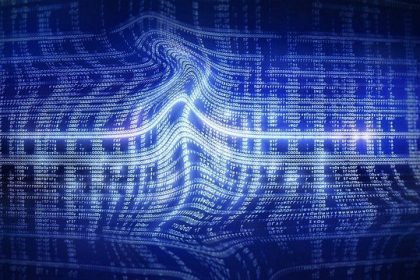A recent ruling of the ECJ deals with copyright-protected works that are displayed on a website with the consent of the right holder and which are additionally displayed as an embedding by digital framing of another, third-party website, e.g. as thumbnails and preview images. Is this a lawful practice?

A good example of this is the German Digital Library (DDB), a digital culture and knowledge library that networks German cultural and scientific institutions. The DDB website contains links to digitised content stored on the internet portals of the participating institutions. As a “digital shop window”, however, the DDB itself only stores thumbnails, i.e. reduced versions of the original images of the respective subject. In addition, the DDB website contains the button “Show object on original page”, this leads as a direct link to the website of what is shown as a digital preview.
Among other things, the DDB, as the guardian of the digital cultural library, also refers to messages from the German Cultural Heritage Foundation “Stiftung Preußischer Kulturbesitz (SPK)” and shows corresponding content as a preview on its website through digital framing.
Legal dispute: digital framing of works protected by copyright
VG Bild-Kunst, a collecting society in Germany that was founded to protect the rights of authors, filed a lawsuit against this practice. Digital framing practised in this way, such as the integration of SPK content into the DDB, is not lawful, the copyright rights are circumvented by digital framing. VG Bild-Kunst argued that the conclusion of a licence agreement with SPK for the use of its catalogue of works in the form of thumbnails had to be linked above all to a technical possibility against framing of the works on the DDB website.
SPK, in turn, is of the opinion that such a clause in the agreement is not appropriate with regard to copyright and wanted to have this clarified in a declaratory action before the Berlin Regional Court. Since then, this case has been going through the instances of the German courts, and is currently before the Federal Court of Justice (BGH).
The decisive legal question in this case is whether a third party’s website constitutes a communication to the public of that work within the meaning of Art. 3(1) of Directive 2001/29 by means of digital framing. The BGH referred this question to the highest European court (ECJ), which has now answered it.
The legal situation
Article 3 (1) of EU Directive 2001/29/EC, which is relevant here, was adopted in May 2001 to harmonise certain aspects of copyright and related rights in the information society. This harmonisation serves above all the freedoms of the internal market, as was already clearly stated in the political considerations on this Directive. At the same time, however, this Directive serves the declared main objective of achieving a high level of protection for authors.
In the meantime, another relevant EU Directive has been adopted, namely Art. 16 of EU Directive 2014/26, according to which collecting societies are obliged to grant a licence to use the rights they are entrusted with on reasonable terms to any person who so requests. This has already been incorporated into German law, as Section 34 (1) sentence 1 of the Act on the Administration of Copyright and Related Rights by Collecting Societies.
ECJ Case Law: Hyperlinks and Digital Framing
However, the ECJ has already interpreted Article 11 of the Charter of Fundamental Rights of the European Union and the freedom of expression and information guaranteed therein in relation to the digital context (C-160/15). The ECJ ruled that hyperlinks contribute to the smooth functioning of the internet and to the exchange of opinions and information.
On the other hand, the ECJ has already ruled that the term “communication to the public” within the meaning of Art. 3(1) of Directive 2001/29, should be understood in a broad sense. In its judgment C-263/18, the ECJ had therefore ruled that the Concept of ‘communication to the public’ includes any communication to the public not present at the place where the communication originates, and thus also any corresponding transmission or retransmission of a work to the public by wire or wireless means, including broadcasting. The ECJ referred in particular to the 23rd recital of Directive 2001/29.
And the ECJ already ruled in 2014 that the framing technique, which divides an internet page of a website into several frames and in one of these frames a component of a third, different website is displayed by means of a clickable link, is a concept of ‘communication to the public’ within the meaning of Article 3 of Directive 2001/29/EC (C-466/12).
Exhaustion of rights through a first publication?
Also relevant in the case at hand is the question of whether the right of communication to the public of a work on the internet is de facto exhausted as soon as this work is already made freely accessible to all internet users on a website with the permission of the right holder.
However, the ECJ sees it differently. Exhaustion of rights by means of a first publication would be contrary to Art. 3(3) of Directive 2001/29. However, the right to authorise or prohibit other public performances of copyright-protected works is not exhausted by authorising the integration of protected works into a communication to the public, the ECJ ruled. Rather, Article 3 combines two cumulative elements, namely an act of communication of a work and its communication to the public.
The Judgment
Therefore, the ECJ ruled, Article 3 of Directive 2001/29/EC must be understood as meaning that digital framing of copyright works displayed on a website with the consent of the rightholder constitutes communication to the public within the meaning of that provision – if such embedding circumvents the measures adopted or imposed by the copyright holder to protect against digital framing.
But, the main proceedings are precisely concerned with a situation where the copyright holder is seeking to make the grant of a licence subject to the implementation of measures to restrict framing in order to limit access to his or her works from websites other than those of his or her licensees. In such circumstances, that copyright holder cannot be regarded as having consented to third parties being able freely to communicate his or her works to the public, was ruled by ECJ.
Do you need advice or professional representation on IP protection?
Our patent and trademark law firm will be happy to assist you with your trade mark, design and copyright applications or your patent protection activities.
If you are interested, please do not hesitate to contact us.

Sources:
EuGH: Digital Framing of works protected by copyright, EU:C:2021:181
Image:







Leave a Reply